Venus Optics Laowa 12mm F2.8 Zero-D
Aberrations
No lens can be totally free of optical flaws. The following list describes the main defects that a lens can suffer from.
Name | Description |
| Chromatic aberration | Different colors do not have the same focus point. The result is colored lines (usually red or green) on edges showing a sharp transition from clear to dark tones, and a general decrease of the sharpness. Occurs mostly at wider apertures. Easy to correct via software. Mitigated by the use of achromatic lens elements. In simple terms, lateral CA occurs in the in-focus zones, while longitudinal CA occurs in out-of-focus zones. |
| Purple fringing | Sometimes caused by chromatic aberration effects. Can also occur because the RGB color filters in front of pixels create differences in pixel sensitivities. Creates a purple band on edges showing a sharp transition from clear to dark tones. Occurs mostly at wider apertures. Easy to correct via software. |
| Flare | Internal reflections on the various lens elements cause a decrease of contrast, the apparition of a bright veil, or ghosting. Occurs if an image includes bright light sources, especially if the light source is near the edge. Using a lens hood helps to control flare. Better lens coatings greatly reduce the effect. |
| Ghosting | A type of flare causing artifacts (orbs) to appear on an image including bright light sources, especially if the light source is near the edge. Can be used artistically. |
| Coma | Flaws in the optical design cause point sources (such as stars) located on the sides of the frame to appear elongated. Dependent on the lens design. |
| Distortion | Straight lines appear curved. Dependent on the lens design. Tested in another page. |
| Spherical aberration | Light rays hitting the sides of the lens do not have the same focus point as those passing through the center. Mitigated by the use of aspherical elements. |
Not all of those optical effects are easy to test independently. Purple fringing and chromatic aberrations are almost always coupled, and will be tested together. Flare and ghosting will also be measured as a pair. Distortion will get its own page later in this review. The other aberrations will not be formally tested as their effects are both harder to isolate and generally better controlled by design.
Flare
Flare will affect images in which a bright light source, such as the sun, is present in the frame or near its border. The use of a lens hood helps reduce the effect for side lighting, as does a recessed front element. High-quality lens coatings play a very important role in minimizing flare, by improving light transmission and minimizing internal reflections.
The FA 43mm Limited uses Pentax's well-regarded SMC coatings. While not as advanced as the newer HD coatings, SMC has always been considered as a market leader. Ghostless coatings were introduced with this lens and should help with flare.
Flare Test One - Center-of-Frame Sunlit Flare
As usual, we used the sun as our light source for flare testing. It is bright and covers a wider range of wavelengths than most artificial light sources. We offset the sun slightly in order to see eventual ghosting which could be hidden if there was a straight line between the light source and the sensor. You can click on the thumbnails for larger views.
| F2.8 | 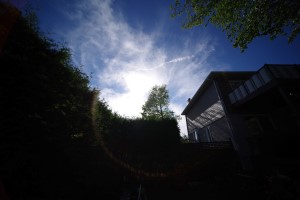 |
| F4 |  |
| F5.6 | 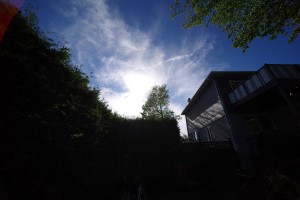 |
| F8 | 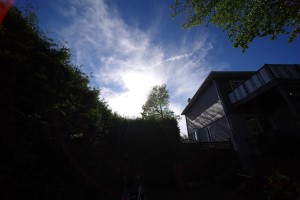 |
| F11 | 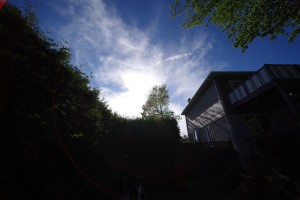 |
| F16 | 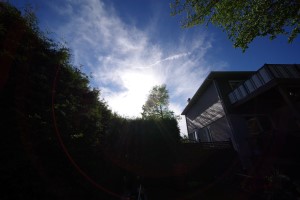 |
| F22 | 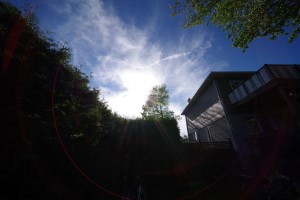 |
With the sun in the center, a well-defined circle appears at wider apertures. Medium apertures are devoid of flaws but another halo returns at smaller values. These results are within expectations for an ultra-wide lens.
Flare Test Two - Edge of Frame
For this test, we placed the source in the lower right corner of the frame, directly illuminating the sensor. You can click on the thumbnails for larger views. We looked at both the APS-C and full frame fields of view.
Full frame
| F2.8 | 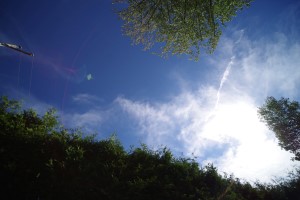 |
| F4 | 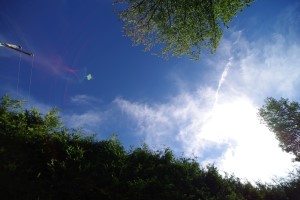 |
| F5.6 | 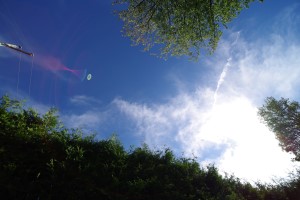 |
| F8 | 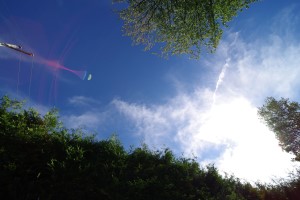 |
| F11 | 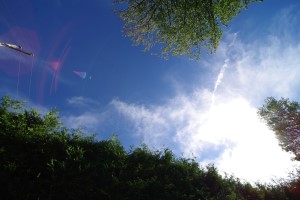 |
| F16 | 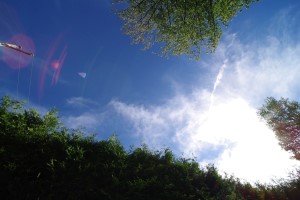 |
| F22 | 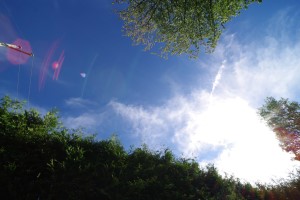 |
With the sun in the corner, the lens is never free of flare. Several ghosts appear in the corner opposed to the sun, and many curved lines are seen near the center of the image. The ghosts become better-defined as the aperture closes, but never go away. Some decreased contrast is apparent near the light source.
APS-C
| F2.8 | 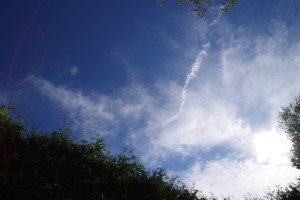 |
| F4 | 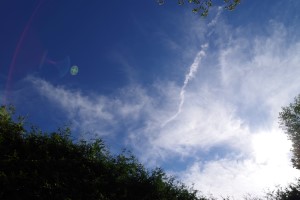 |
| F5.6 | 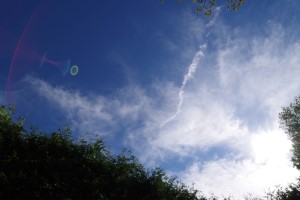 |
| F8 | 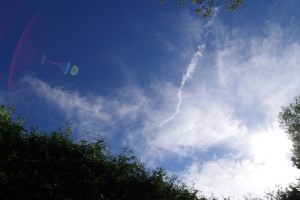 |
| F11 | 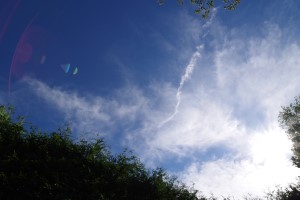 |
| F16 | 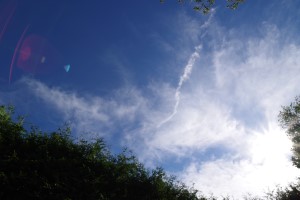 |
| F22 | 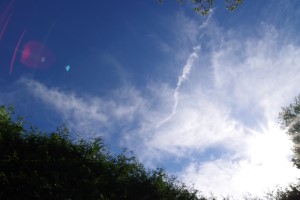 |
APS-C is basically a crop of the full frame field of view. As such, the same observations apply. Ghosts are still visible and can be bothersome.
The following two images show that, with the light source just outside the frame, flare becomes much more dramatic. The images are shot in full frame mode, at F2.8 and F22. They illustrate that care must be applied at all times with the Laowa 12mm regarding flare.
| F2.8 |  |
| F22 |  |
Chromatic Aberration Test
For this test we used a well-lit, sharp transition from dark to bright, in order to make manifest any chromatic aberration present in the image.
We then looked at three parts of the image: the focus point, the top and the bottom (beyond and before the focus point). We tested the cop size of a full frame and APS-C sensor. The center point is the same. You can click on the images to see 100% crops, and navigate by using the left-right arrows.
Full Frame
Center | Top | Bottom | |
| F2.8 | 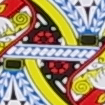 | 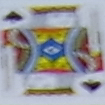 | 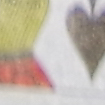 |
| F4 | 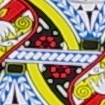 | 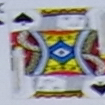 | 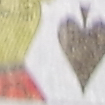 |
| F5.6 | 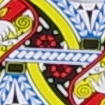 | 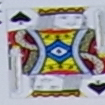 | 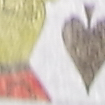 |
| F8 | 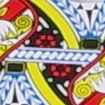 | 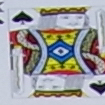 | 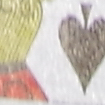 |
| F11 | 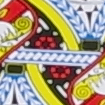 | 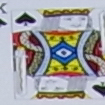 | 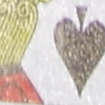 |
| F16 | 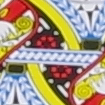 | 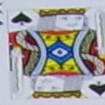 | 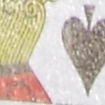 |
| F22 | 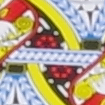 | 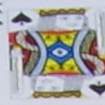 | 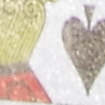 |
At all apertures, the Laowa 12mm is free from chromatic aberrations. There is a hint of purple fringing at the top and F2.8, but it's subtle and gone at smaller apertures.
APS-C
Center | Top | Bottom | |
| F2.8 |  |  |  |
| F4 |  |  |  |
| F5.6 |  |  |  |
| F8 |  |  |  |
| F11 |  |  |  |
| F16 |  |  |  |
| F22 |  |  |  |
With the better enlargement of APS-C, the lens shows small but visible purple fringing visible at wider apertures at the top, and at all apertures at the bottom. CA is again kept well under control.
Verdict
The Laowa 12mm is a mixed bag regarding aberrations. On one hand, chromatic aberration is absent and purple fringing not bothersome (albeit present). On the other hand, flare and ghosting are present at all apertures, and strong enough to influence the resulting images. While ghosting can be used creatively, flare and its accompanying reduction in contrast are never desirable.


